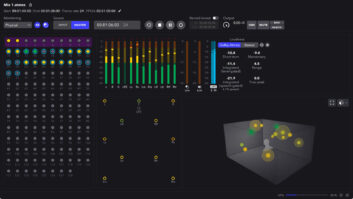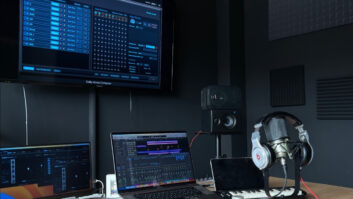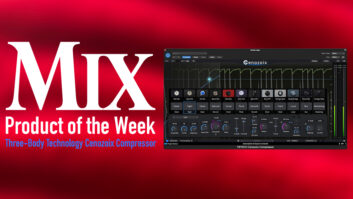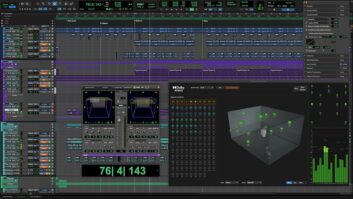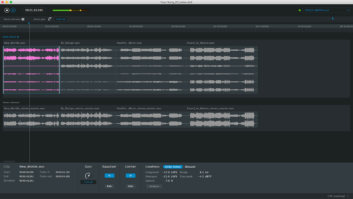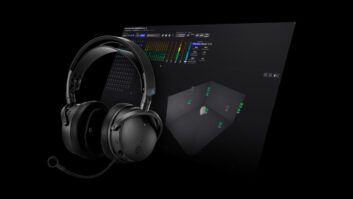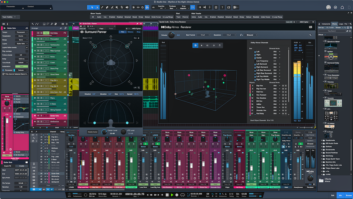
The DP600 Program Optimizer from Dolby (www.dolby.com) is the world’s first intelligent file-based audio loudness analysis and correction system. The company’s first outboard processor without audio connections (I/Os are gigabit Ethernet ports that accept audio files in RAW format or within popular media-wrapper formats), the DP600 expands upon the technology developed for Dolby’s award-winning LM100 Broadcast Loudness Meter.
The DP600 gives cable, satellite and IPTV broadcasters the ability to automatically normalize the loudness of all of their file-based programming and commercials without impacting the original dynamic range. Programs can be normalized either by correcting metadata values or scaling the audio signal to a target loudness level; i.e., if the audio format does not include metadata. Other benefits include the option of faster-than-real-time, file-based encoding and decoding of Dolby Digital, Dolby Digital Plus and Dolby E content, as well as efficient transcoding between the formats.
“One of the original design goals for the system was to help people set a specific parameter in the AC-3 bitstream called dialnorm [dialog normalization], which is used by the decoder to normalize the output levels while it’s being decoded,” says Dolby senior broadcast product manager Jeffrey Riedmiller. “When dialnorm is used properly, it allows broadcasters to match commercials to programs, programs to programs and channels to channels.”
With file-based distribution, one problem stems from the incorrect setting of the content’s metadata configuration in the bitstream. “When people make DVD or broadcast television programs, they’re responsible for setting this dialnorm parameter correctly — it doesn’t automatically set itself — and then it’s buried in the stream by the encoder,” Riedmiller continues. “So for years, this feature has been in here, but rarely used. Now that people are transitioning to an all-digital broadcast system infrastructure, they’ve pulled out or disconnected a lot of their brute-force, multiband audio dynamics processors. So the program dynamics have gotten greater, especially now that we have a digital delivery system that can deliver a dynamic range greater than 100 dB to the home.”
Wide dynamic range is good, but with that comes the downside of varying loudness on playback. This is especially problematic when broadcasting a feature film — where the speech is mixed much lower relative to the maximum permissible level — and butting that up with highly compressed commercials or TV programming like sitcoms. “The loudness issue kept coming up in standards bodies and ad hoc committees throughout the broadcast industry for years and the situation seemed to be getting worse.”
However, the solution to the problem came in part from an overall shift in the distribution system. “Now with so much work being done in the file-based space, we have the side benefit of having the entire program in our hands before it’s aired. We don’t have to deal with all of the problems of real-time processing, with short look-aheads or having to adjust the gain around constantly. Now, we can look at the whole thing and integrate the speech over the entire file. With the DP600 incorporating AC-3 and Dolby E, we don’t even code it or recode it to do that — there’s no impact on audio quality or dynamic range; we’re just changing the little label in the stream that tells the set-top box where to set the volume.”
As with other industries, downsizing plays a part in production methods. “These days, most facilities don’t even have the time or personnel to set or check these parameters on a program-by-program basis,” notes Riedmiller. “The DP600 gives any facility with a file-based infrastructure the ability to set these automatically, without any operator intervention. Besides its abilities to go in and access the loudness of the program and correct it, the DP600 also includes the ability to do transcoding, encoding and decoding of all the Dolby audio flavors in a file-based system.”
Going the next step, Dolby decided to open the system and publish its API (application programming interface), which is provided as an XML Web service using SOAP over HTTP, so that third-party manufacturers and developers could integrate DP600 functionality into their systems and workflows. “A lot of the networks and cable MSOs have software programmers on staff, and many want to do custom DP600 integration,” says Riedmiller.
Dolby expects the API approach to be popular with users, but, as Riedmiller notes, there are other ways to drive the system. “One is a manual approach, where you open a Web page and submit jobs to the unit. The other is what we call a hot folder — or FTP watch — method. The user can define a particular folder on a network and instruct the DP600 to process or check any particular file type that comes in and look at the loudness, analyze it, correct it and check it, and then move it to another directory when it’s completed. It becomes an automated process that melts into your day-to-day operations.”
However, the list of potential customers for the DP600 extends well beyond broadcasters. “We’ve seen a lot of interest from networks and even some post houses — not just for its file-based AC-3 and Dolby E coding/decoding, but as a final-stop QC check before programs leave a facility. A lot of networks are requiring that dialnorm and other metadata be set appropriately, and the DP600 can offer a lot of peace of mind.
“The DP600 offers a simple-to-use solution that reduces loudness complaints and, in the end, improves the viewer’s overall entertainment experience.”
Dolby DP600 is slated to ship early next year. Pricing is about $20,000, depending on what functions the user requires.
